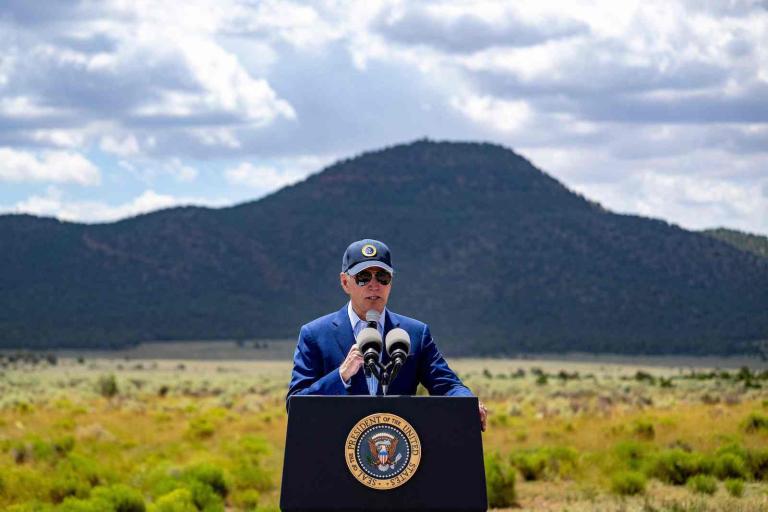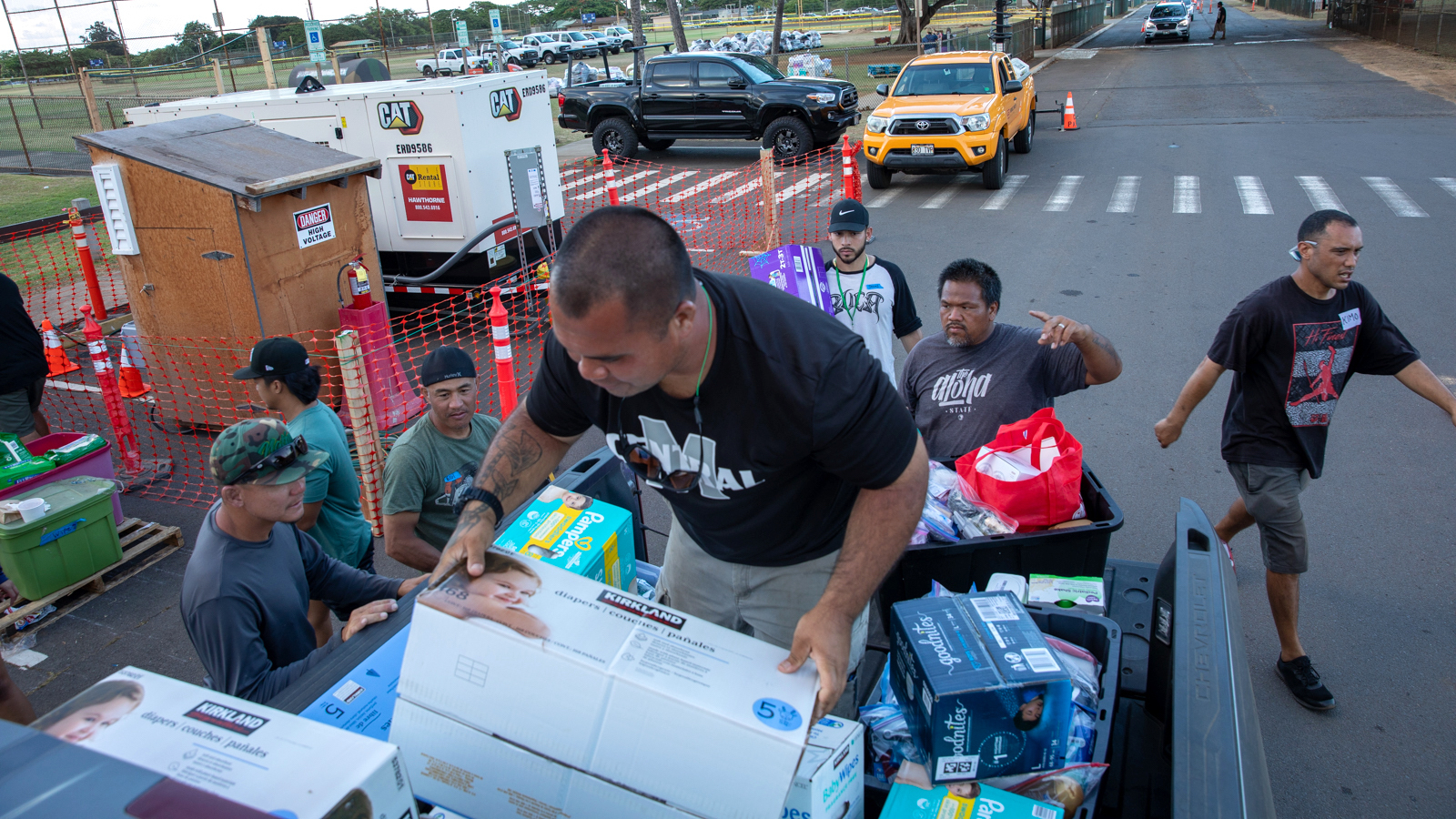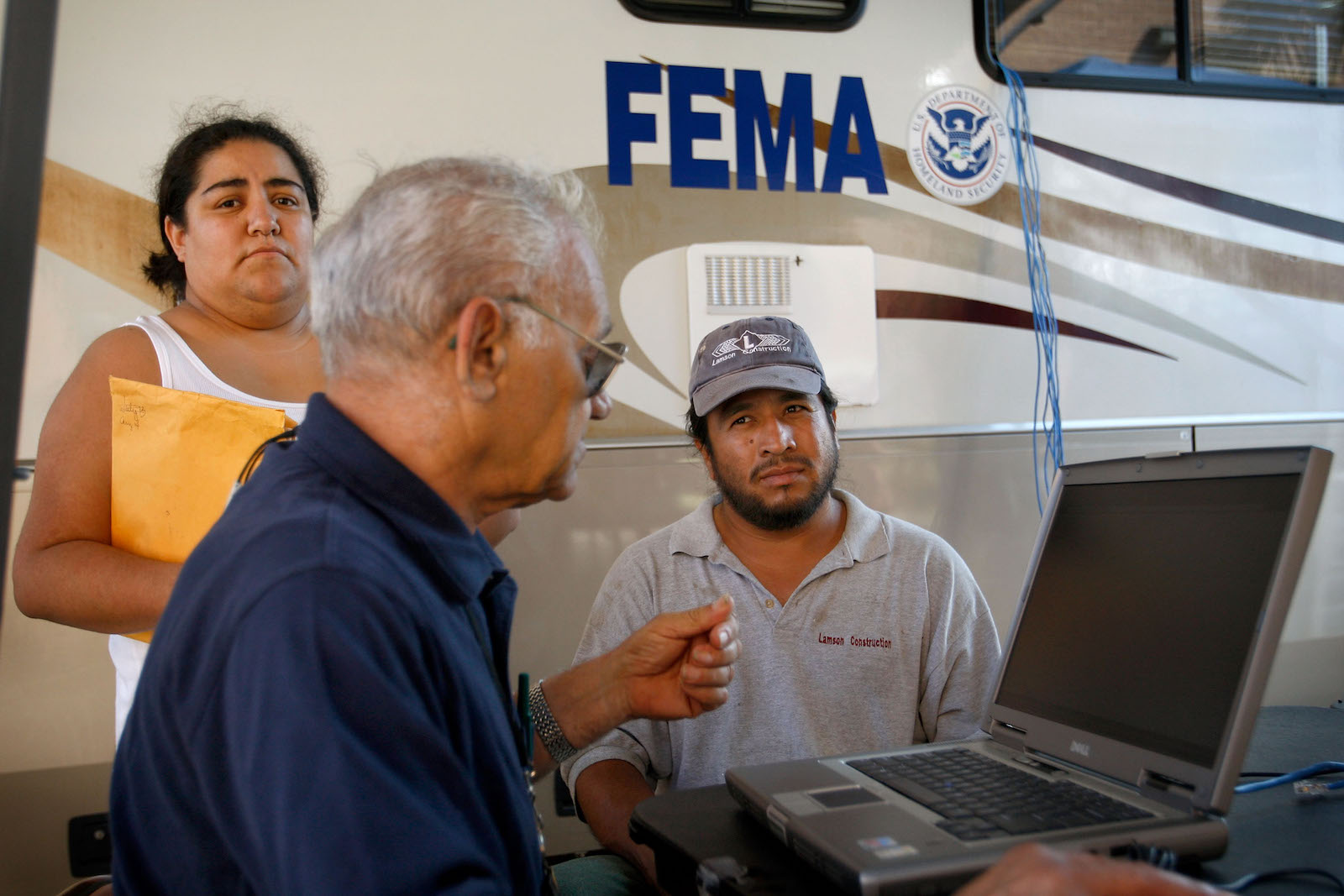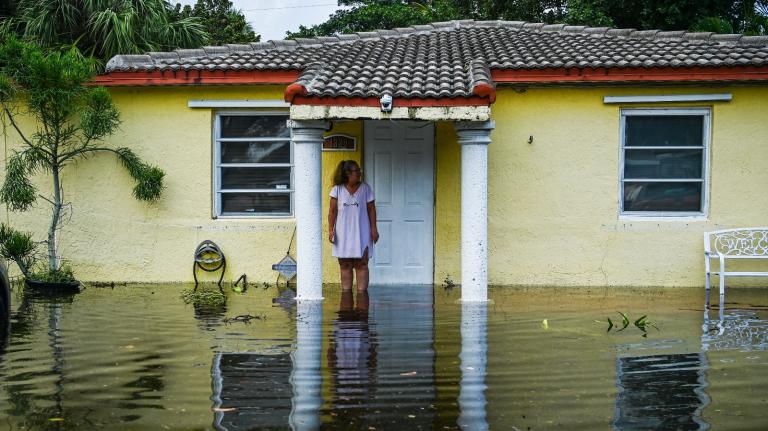When a hurricane or a wildfire strikes the continental United States, survivors tend to spread out over dozens or even hundreds of miles, moving into hotels and apartments wherever they find them. Meanwhile, the Federal Emergency Management Agency, or FEMA, hauls in hundreds of trailers to provide shelter in the disaster zone.
Such efforts on Maui after last weekʻs deadly wildfires will be far more challenging. The island is only 735 square miles, and much of it is mountainous, which will make it difficult to find temporary homes for all the survivors. To make matters worse, the blazes on the island have destroyed upward of 2,200 structures, putting further pressure on an already strained housing market.
Furthermore, Hawaiʻi is more than 2,500 miles from the continental U.S., which will make it much harder for the federal government to provide supplemental housing. And unlike in other states, residents can’t just drive to the next-closest hotels and apartments —they have to buy plane tickets and show ID to reach other islands or the continental U.S.
Lynette “Pinky” Iverson, who fled Lahaina when the homes on her street caught on fire, told Grist that a FEMA convoy moved her earlier this week into the Royal Lahaina Resort hotel, just down the street from the burn area.
“The people that are coming in after me, I’m looking at them, they’re teary eyed,” she told Grist. “They’re devastated, almost like zombies. As far as housing, I have no idea what the next step is. A lot of people are choosing to leave the island.”
In a press conference on Maui earlier this week, FEMA’s top official acknowledged that the agency will struggle to provide temporary shelter.
“We are working very closely with the governor to better understand all available options, whether that means longer term, we bring in tiny houses or our transitional housing units,” said administrator Deanne Criswell, who has led the agency since 2021. “We are not going to be able to rely on all of the traditional programs that we do in the continental United States.”
FEMA’s first response after a disaster is to place survivors in hotels and short-term rentals, reimbursing property owners at a flat rate. The agency covers these temporary housing costs for 18 months after a disaster occurs.
Given the size of its tourism industry, Maui has a larger concentration of hotels and vacation rentals than most places in the U.S. Before the fires, the island had more than 20,000 hotel rooms, as well as thousands of Airbnbs and other options, although many of them were in the historic Lahaina area that sustained the worst fire damage.
Hawaiʻi Governor Josh Green said in a video posted on Twitter Wednesday afternoon that the state had made more than 1,000 hotel rooms and 1,000 Airbnb units available, and was setting aside a few hundred of them for disaster workers. The state had already filled up a hotel with victims and was working to fill up another.
In the weeks to come, though, the onus will be on hotels to volunteer their rooms, since neither FEMA nor the state government can commandeer them.
Some started accepting fire refugees of their own accord just days after FEMA activated its reimbursement program.
“We’ve already been taking people in, and we’re taking a lot more people than usual,” said Kyle Raquel, a front desk attendant at the 87-room Days Inn hotel in Wailea, a beachfront area that didn’t burn during the fires. “We’re calling the tourists who’re supposed to be flying in next week to cancel their reservations so we can make some room for people who actually need the housing.”
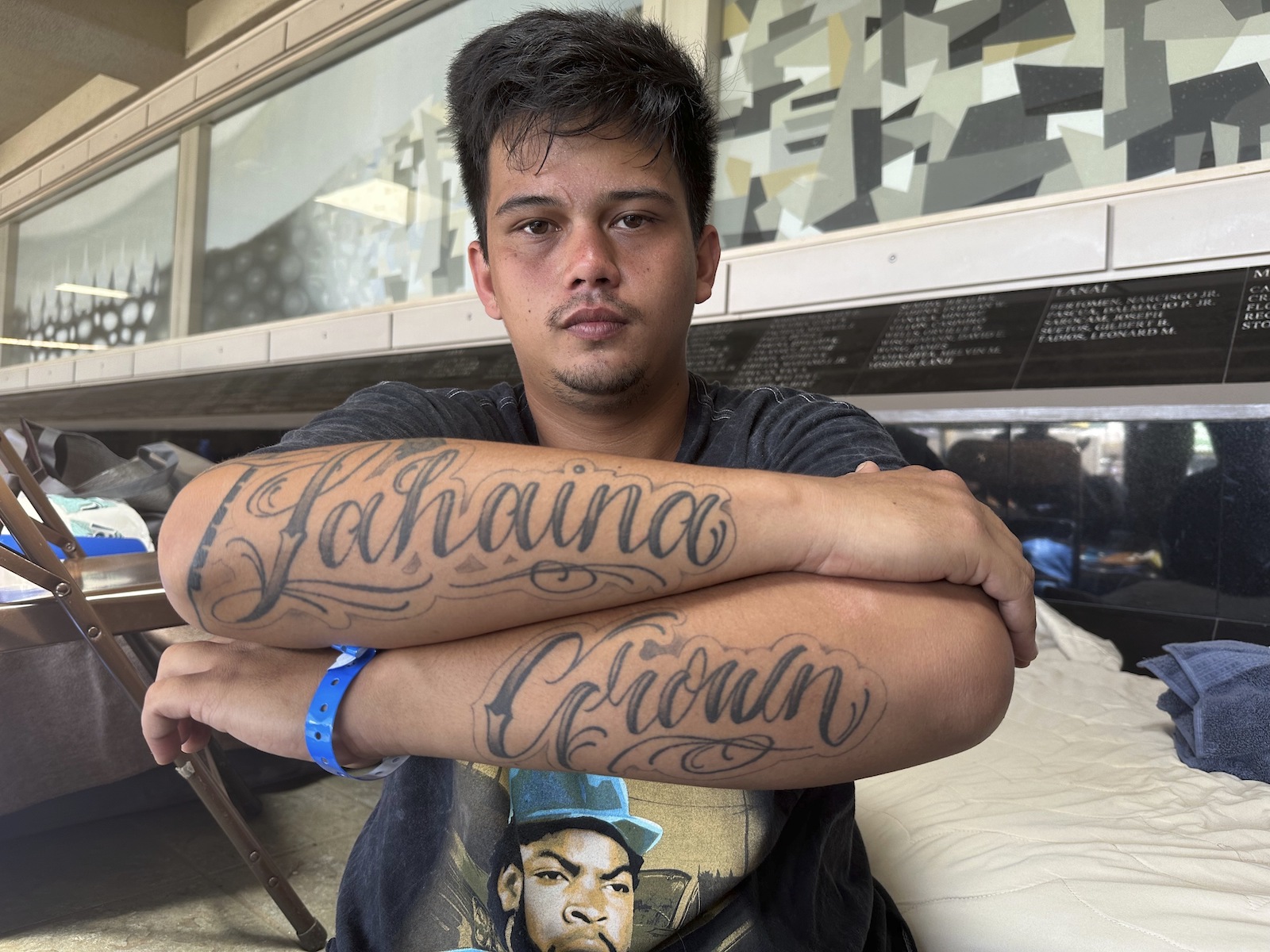
It remains to be seen how many hotels will follow suit and forego tourist revenue. A representative from the Four Seasons hotel, a five-star resort in Wailea, told Grist that it is setting aside rooms for survivors and first responders. About two-thirds of Maui’s hotel rooms were occupied in June, according to the state.
Representatives for the Hawaiʻi and Maui County emergency management agencies did not respond to interview requests. In response to questions from Grist, a spokesperson for FEMA said that the agency had registered 620 people for housing assistance so far, and said it was convening a task force to design “innovative sheltering and housing solutions for survivors.” The spokesperson said the agency could provide trailers or supplemental housing only once the state requests it.
“Can we get [temporary housing units] there? Yes, but it’s too early to start talking about a direct housing mission,” said Robert Barker, a spokesperson for FEMA’s West Coast regional office. “Direct housing is not our A, B or C card. It’s typically our F card.”
FEMA has in the past delivered hundreds of trailers (the official term is “manufactured housing units”) to fire and flood areas and even created temporary communities with streets and basic infrastructure. Such was the case after the Camp Fire destroyed Paradise, California, in November, 2018. The following May, FEMA opened a makeshift city in nearby Oroville, providing semi-permanent housing to 40 people.
But temporary housing is difficult to transport, and it sometimes takes months to arrive. That was the case in Louisiana in 2021 after Hurricane Ida, when residents waited three months for trailers.
Maui’s location will make it even harder. FEMA encountered these difficulties in 2017 when it responded to Hurricane Irma on Puerto Rico and the U.S. Virgin Islands. After determining that it would cost about a quarter-million dollars to ship a single trailer to the Virgin Islands, the agency scuttled plans to provide direct housing to the territory. Hawaiʻi is about twice as far from the continental U.S. as the Virgin Islands.
In testifying before Congress about efforts to restore power after Hurricane Irma, an official from the Department of Energy said in 2018 that the “complicated nature of an island response created significant logistical challenges as well as a response and recovery timeline that is longer than a continental United States disaster.”
Even after any trailers get on the ground, it’s essential that FEMA ensure they’re durable enough to last for months or even years. In past cases, some of them have developed mold after months of use, or exploded due to faulty propane tanks.
Still, direct housing relief will be all the more important on Maui, which was experiencing a severe housing shortage before the fires. Home prices increased by about 35 percent between 2019 and 2022, making it Hawaiʻi’s least affordable county for homeownership. Half of households spent more than 30 percent of their income on rent or mortgages.
West Maui, which includes Lahaina, in particular had a large population of renters and households with more than one family. According to the county’s hazard mitigation plan, 39 percent of housing units in the region were in multi-family developments like apartment buildings, and 16 percent of people lived in crowded quarters, among the highest rates in the county. The fires destroyed a large chunk of that affordable housing, including a 142-unit subsidized apartment complex in Lahaina.
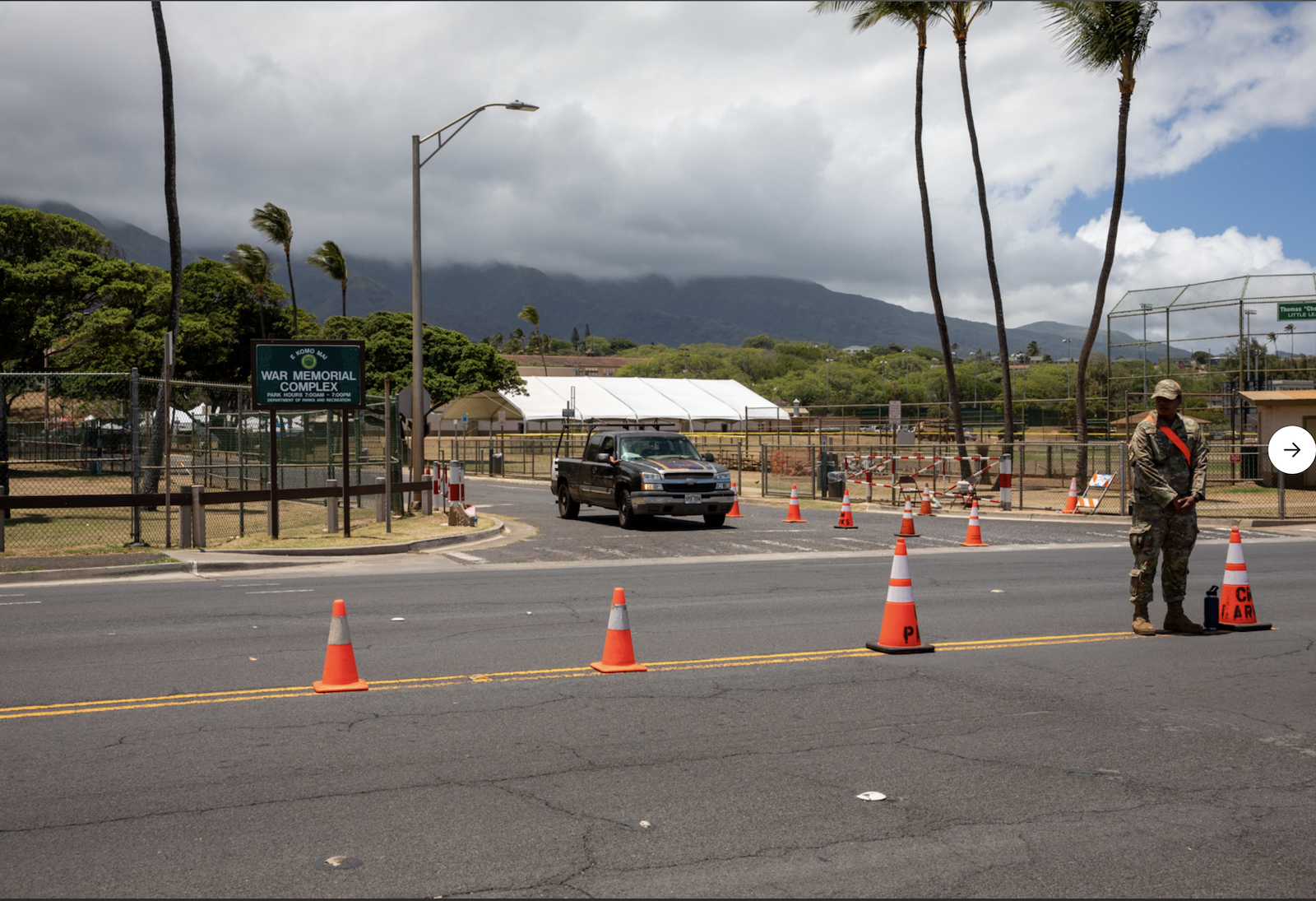
“It’s gonna be really tough,” said Cassandra Abdul, the director of Nā Hale O Maui, a Maui-based nonprofit that works to develop permanent affordable housing. “We already have a really critical housing shortage, and it’s horribly expensive to rent. It takes a long time to get housing built here, because everything has to be imported, and the permitting process can take years.”
The lack of available housing will ensure that many victims reside in temporary shelter for months, said Mihir Parikh, a senior program director at Enterprise Community Partners, a national affordable housing nonprofit.
“The emergency housing sometimes ends up becoming permanent housing,” he said. “Given the lack of availability of land on Hawaiʻi,” he added, “FEMA needs to explore other options, like modular homes, that can be added to over time.” These prefabricated units are anchored in place, unlike trailers, and can provide permanent housing if necessary. Parikh said that the county and state governments should loosen zoning requirements to allow for alternative housing types such as cottages and in-law units.
Abdul says she’s optimistic that the island will recover eventually, but says it will take several years to build enough affordable housing to replace what’s been lost. Nā Hale O Maui lost 15 below-market units during the fire. Without permanent replacements, she said, many people will end up leaving the island once disaster aid runs out.
“I suspect that there are going to be people that are going to move away,” she said. “Whether that’s going to be permanent or temporary, we don’t know.”
Gabriela Aoun Angueira contributed reporting to this story.
